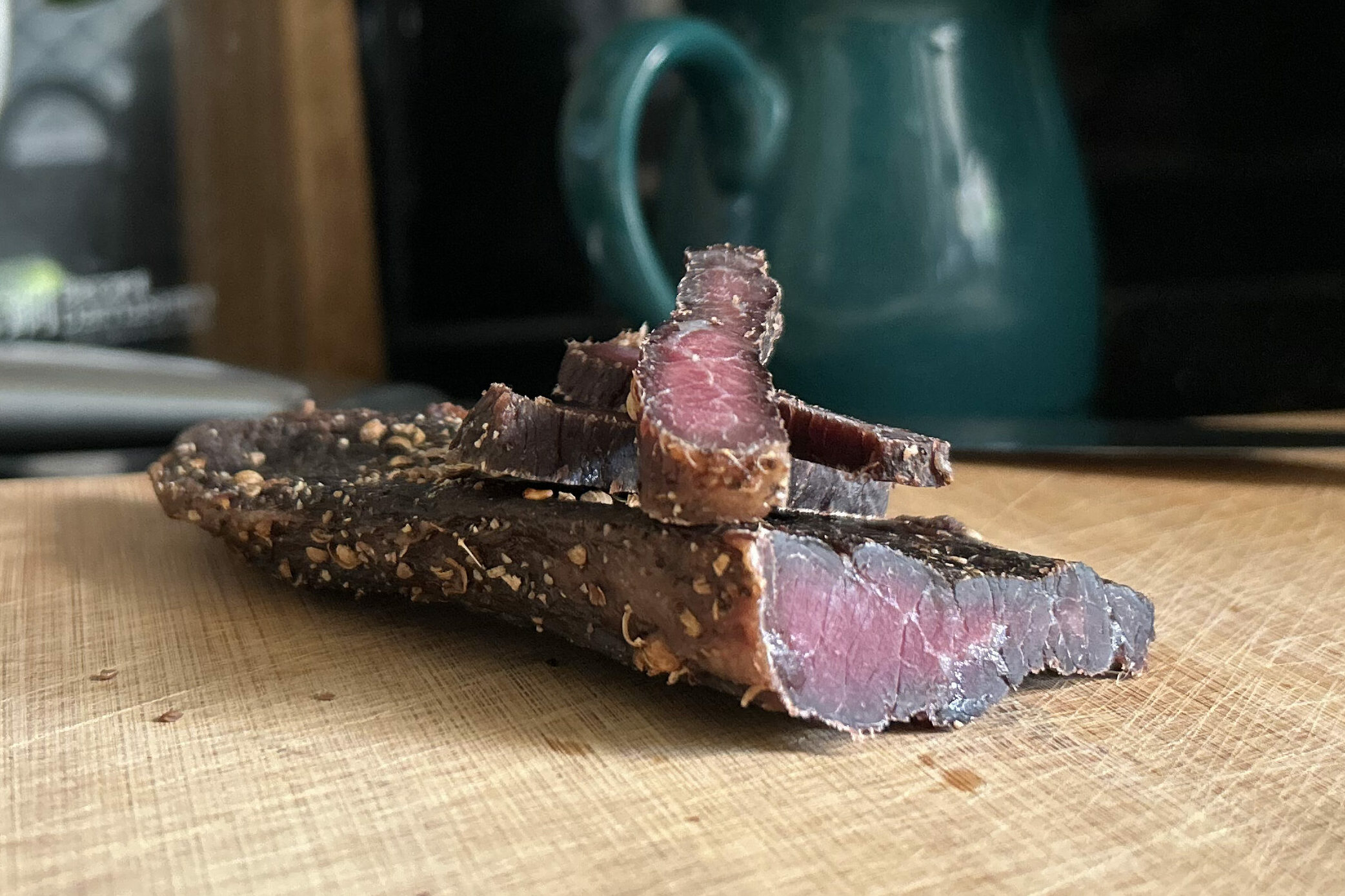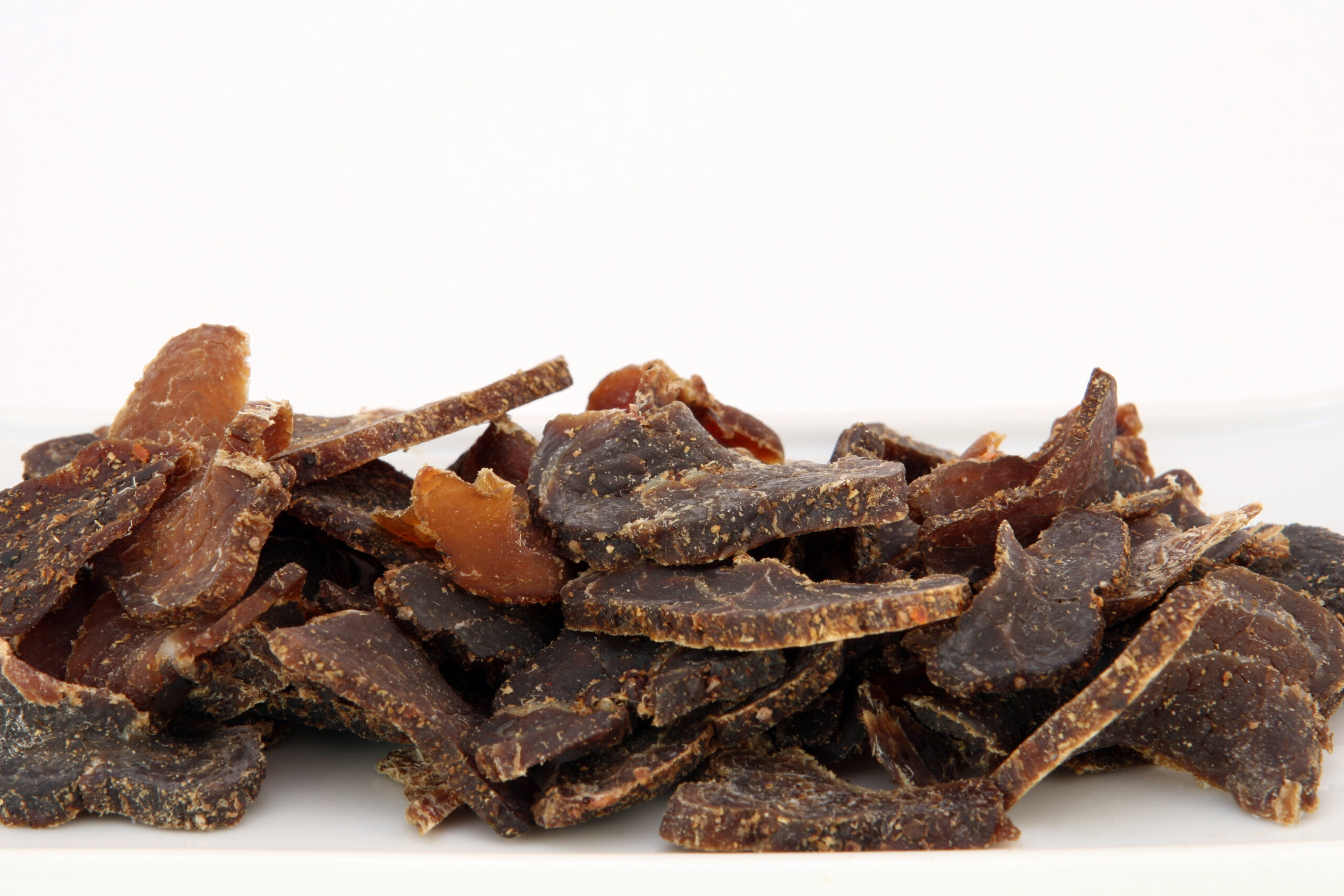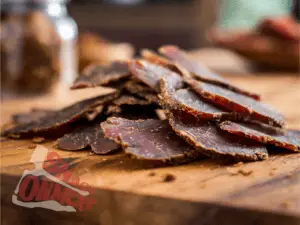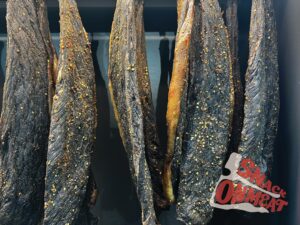If you are lucky enough to have excess biltong or just really good self-control, you will probably be wondering how long it will last now that it’s opened. It may be a common assumption that because it’s preserved meat, it will last a long time, but this is only true if stored correctly.
Biltong will last anywhere from 4-6 days before mould can creep in and up to 12 months, depending on how it’s stored. As biltong is a fresh food, the correct storage of the product is essential if you want to extend its shelf life and keep that delicious flavour.
Once opened, it is important to keep the biltong in a cool, dry place, such as the kitchen pantry. Keeping your biltong in a brown paper bag or an open container covered with paper towels will allow for airflow. This is key, as it prevents mould from growing in humid conditions.
To store biltong, there are other options, such as refrigeration. This provides a cool environment to preserve moisture and freshness, which will extend the shelf life for a few weeks. There is also the option of freezing the meat, but with special precautions.
For most people, biltong won’t last more than a few hours, let alone a few days! But if you want to store biltong for longer periods of time, there are several measures you can take. Here are some tips and techniques for correctly storing biltong for both short-term and long-term preservation.

Short Term Storage
If you are a long-time biltong lover like myself, you may have experienced your delicious biltong going mouldy. If you are unsure, the mould is that white stuff that suddenly appears on the surface of the biltong. In the initial stages, it can be wiped off with a cloth and vinegar, but mould is also a sign that your biltong is past its use-by date.
There are two factors that mould requires to grow rapidly on your precious biltong: humid conditions and exposure to oxygen. Storing your biltong in a cool, dry place, that is out of sunlight, is the first step to keeping moisture away. For most people, this would be the kitchen pantry or kitchen countertop. (Here’s everything you need to know if your biltong went mouldy!)
The next most important thing is to provide good airflow (let it breathe) by storing it in a paper bag or a container with a paper towel over the top.
A good technique is to shake or shuffle the biltong around every day to ensure no humidity lurks between two pieces. Additionally, you can add an oxygen absorber (food grade), which will further prevent any moisture that causes mould growth. Biltong stored with these parameters will last up to 7 days, but good luck not finishing before then!
Note that biltong continues to dry out in these conditions and will become tougher and, in my opinion, less palatable as time goes on. To combat this and allow for longer shelf life, refrigeration is the next option.

Refrigeration
As mentioned earlier, biltong begins to spoil once it is exposed to oxygen and in humid conditions. Keeping biltong in the fridge is an ideal place to prolong the life of biltong, as it keeps it at a much cooler and more stable temperature.
One problem with refrigeration is that if the biltong is not correctly contained, it will become mouldy quickly. For example, If you keep it in a paper bag it will dry out rapidly. And if you keep it in plastic without removing oxygen it will mould due to moisture.
If you want to store biltong in the fridge, it is key to place it in a sealable plastic bag and remove the air from the inside. This would be commonly done with a vacuum sealer, or alternatively, you can get a straw and suck out as much of the air as possible before sealing. (for more info, here is an article on refrigerating biltong).
Including an oxygen absorber sachet will aid in the preservation of your delicious biltong. Stored correctly in the fridge, biltong will last for several weeks until you unseal it again. Also note that if biltong is in the original, unopened packaging, you can store it in the fridge for as long as the use-by date says.
Freezing
For freezing, it is the same storage procedure as keeping biltong in the fridge. It is essential to place the biltong in a plastic sealable bag and remove every bit of moisture before sealing. Again, it is also highly recommended to add an oxygen absorber. A good rule to go by is 1 sachet per 500 grams of biltong.
If you have a homemade batch of biltong, it is better to freeze the whole piece rather than slicing and then freeze it. This is because once biltong is sliced, freezing can alter the structure of the meat which can degrade the texture and taste. Freezing biltong once sliced is still an appropriate measure to keep your biltong longer, but it won’t last as well as a whole piece.
Once you are ready to defrost the frozen biltong it’s very simple to do so. Placing the biltong still in its packaging out on your kitchen top will allow it to defrost at room temperature and will be ready within 20 minutes.
Some people even slice their defrosting biltong before it’s completely thawed so it can dry quicker and more evenly. There is also a little thing that South Africans do with thawed frozen pieces. The technique is to let it dry out until you can crush it up into fine crumbs, this powder can then be sprinkled over salad, put in omelettes, or just anything you’d like a bit of biltong flavour in.
Related Posts:
- The Truth About Beef Jerky And Your Health
 A favourite among outdoor enthusiasts for its transportability, for fitness enthusiasts for its high protein content, and for those simply …
A favourite among outdoor enthusiasts for its transportability, for fitness enthusiasts for its high protein content, and for those simply … - Kangaroo Biltong: How To Make It
 We all know beef, game, and ostrich are the most traditional meats used for biltong, yet there’s an intriguing meat …
We all know beef, game, and ostrich are the most traditional meats used for biltong, yet there’s an intriguing meat … - What Is Biltong? Everything You Need To Know
 In the world of savoury snacks, one delicacy stands out for its unique flavour profile and rich history – Biltong. …
In the world of savoury snacks, one delicacy stands out for its unique flavour profile and rich history – Biltong. …





